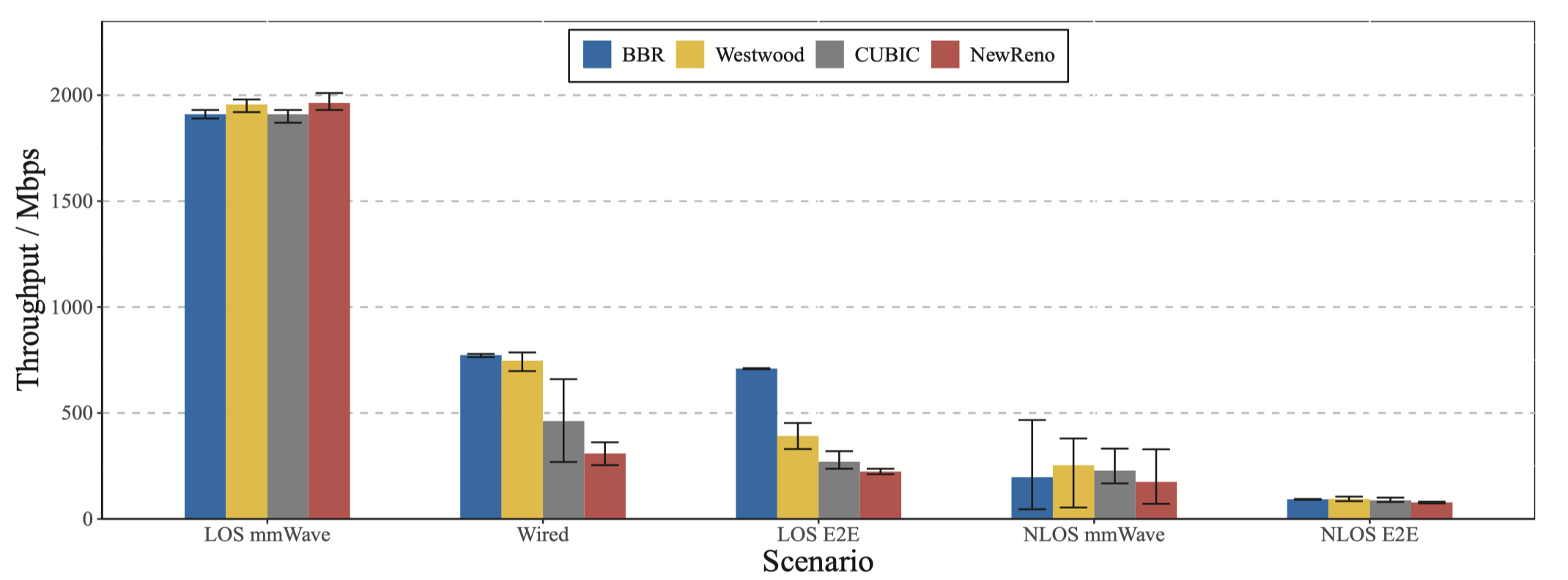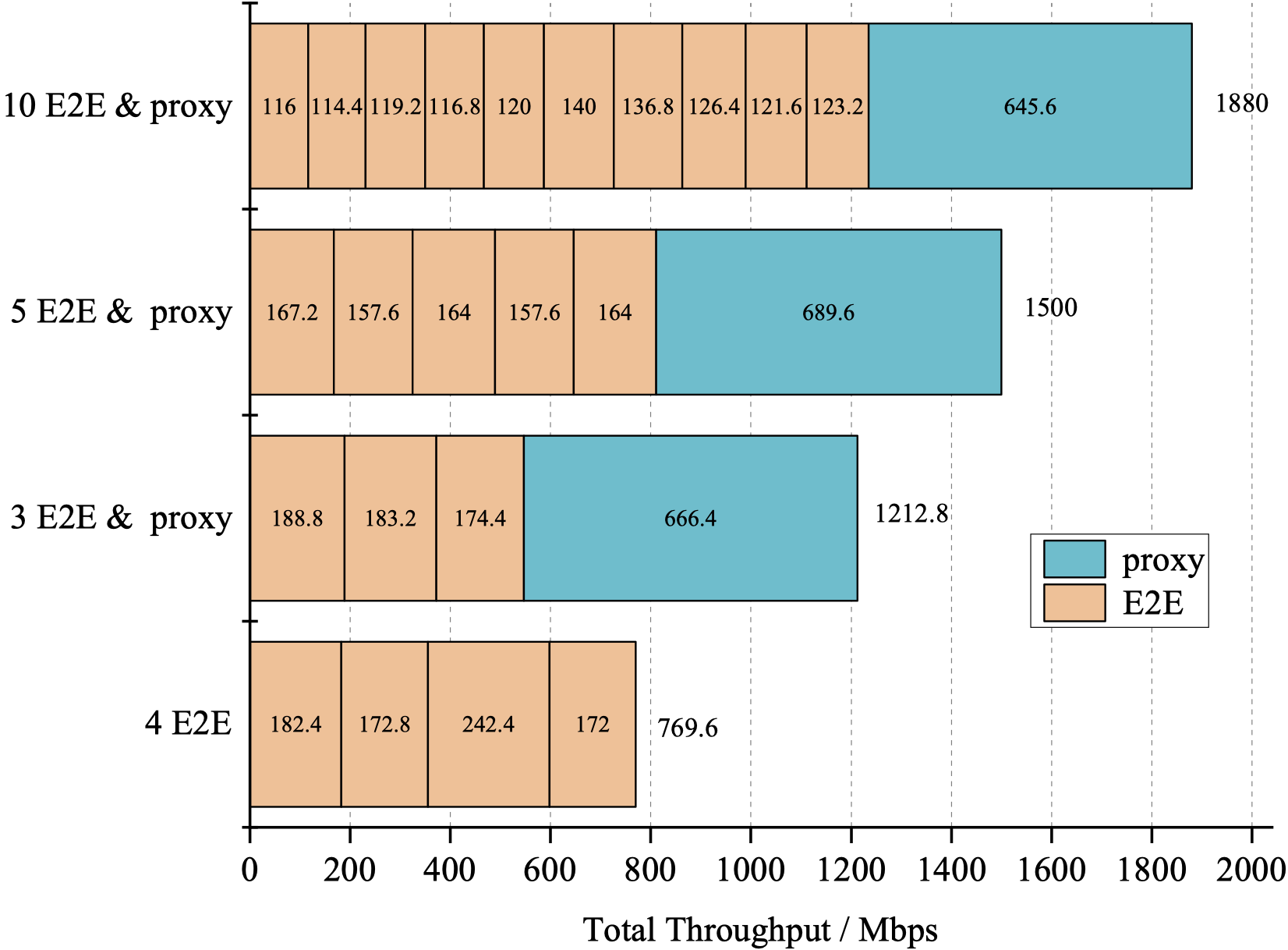Advanced Network Development Department makes new progress in the measurement and analysis of transport layer protocols performance over mmWave networks
The Advanced Network Development Department has made new progress in the measurement of transport layer performance based on 5G/B5G mmWave networks. Based on the department's own 60GHz mmWave network testbed, the transport layer performance has been analyzed from the granularity of congestion control algorithms (CCAs) and protocols in different scenarios, including the ultra-high-bandwidth vulnerable wireless links and high-bandwidth and high-latency vulnerable end-to-end links. The performance improvement ability of the edge side in cross-heterogeneous network transmission has been verified. The relevant research results have been published in journal Computer Communications, and IEEE conference International Symposium on a World of Wireless, Mobile and Multimedia Networks (WoWMoM).

Figure 1 Topology of testbed
To meet the performance requirements of 6G networks such as Tbps-level bandwidth and tens of billions of access numbers, it is necessary to enable new wireless communication technologies and integrate various communication links to form the three-dimensional coverage signal network. For the complex and heterogeneous underlying network, as the last hop wireless communication technology, the millimeter-wave technology has the characteristics of ultra-high bandwidth and high vulnerability, which are different from the sub-6GHz technology. Thus, the transport layer faces great challenges and urgent improvement needs.

Figure 2 Performance of four CCAs in different scenarios

Figure 3 Performance comparison of edge-collaborated proxy flow and end-to-end flows in concurrent transmission
As the most important rate control module of transport layer protocols, the performance of different types of CCAs on mmWave networks needs to be confirmed. But the research on this granularity is still insufficient in both China and abroad. The results of this research analyze the extremely poor adaptability in NLOS millimeter-wave scenarios and the incorrect link bandwidth estimation in E2E scenarios of thess/delay/BDP-based CCAs, providing important data supporting and research directions for subsequent CCAs design. At the same time, with the increasing computing capabilities of mobile edge nodes, this research has also tested that edge nodes can provide effective synergy for end-to-end transmission, confirming that the edge-collaborated proxy flow can fully use the idle bandwidth of the channel while not preempting the end-to-end flow. This research provides a valid method demonstration for the end-network coordination transmission mechanism in the future.
For details, please contact Yang Wanghong (yangwanghong@cnic.cn)
